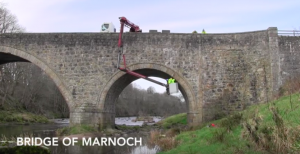As a recruitment team, we, at RGUjobs, are acutely aware that anyone contemplating a career move here will want to do a lot of research about the area. Most people are aware that, as a result of the oil industry, Aberdeen is one of the most prosperous cities in the UK. However, everyone also knows that we’re a long way from most other major cities, especially in England. That’s why we spend a lot of time writing blogs that explain that just because you move from, say, London or Bristol, you aren’t leaving behind all the things you associate with a big city.
That’s particularly true when it comes to the leisure opportunities that exist in the surrounding countryside. Here, if anything, you’d be leaving these behind if you went from Aberdeen to London. Our last few blogs, taking their lead from Scotland’s Year of History, Heritage and Archaeology, have looked at getting out and about in North-east Scotland, from Aberdeenshire’s unique Stone Circles to our internationally recognised, stunning coastline. Today, I’d like to return to a subject that we’ve touched upon in a previous blog, namely, the historic bridges which are preserved across the region.
As in any rural region, people need to get across rivers and historically this was usually done at fording points. Bridges were expensive and there needed to be a very good reason (as well as the money) before they were built. One such reason came in the aftermath of the Jacobite rebellions of 1715 and 1745, when the government spent vast sums in improving the roads and bridges throughout the north of Scotland in order to allow for swift movement of troops.
 Then, as rural business became more important and better communications were demanded between towns, turnpikes (the original toll roads) were established, before being handed over to local authority control in the late 19th century. Today, Aberdeenshire Council is responsible for 1,307 bridges on the public roads network. Most of these, of course, are modern, but, for those who like to get out and about and explore our heritage, it’s the older ones that are most interesting. There is a fascinating video here, showing how the Council inspects and maintains some of the older bridges in the area.
Then, as rural business became more important and better communications were demanded between towns, turnpikes (the original toll roads) were established, before being handed over to local authority control in the late 19th century. Today, Aberdeenshire Council is responsible for 1,307 bridges on the public roads network. Most of these, of course, are modern, but, for those who like to get out and about and explore our heritage, it’s the older ones that are most interesting. There is a fascinating video here, showing how the Council inspects and maintains some of the older bridges in the area.
Many of the area’s old bridges were built by famous engineers. In 1801, the government instructed Thomas Telford, as Engineer to the Commissioners for Parliamentary Roads and Bridges, to survey the roads and bridges in the Highlands and improve the network to allow for better movement of goods and thus boost trade and commerce. Between 1804 and his death in 1834, Telford was responsible for 920 miles of road and 120 major bridges throughout the north. This included his design for the Bridge of Alford as well as Potarch Bridge (1814), Keig Bridge (1817) and Aberdeen’s Bridge of Don (1830).
In the north of the region, John Smeaton, the English engineer responsible for the third Eddystone Lighthouse (and often referred to as the “father of civil engineering”) designed Banff Bridge. He was also one of the team of designers of the impressive bridge at Montrose, which was worked on by a team of at least 22 masons who left over 946 “Mason’s Marks” on the structure.
All this history is all very well, but to appreciate these interesting old bridges properly you need to go and see them. And to do that, if you’re thinking about a move to Aberdeen and a job with RGU, stop thinking and start applying!
Julie Skinner, Resourcing & Benefit Specialist
Email: j.skinner@rgu.ac.uk
You can find out much more about Aberdeenshire’s Historic Bridges in this very interesting document, produced by the local council.
